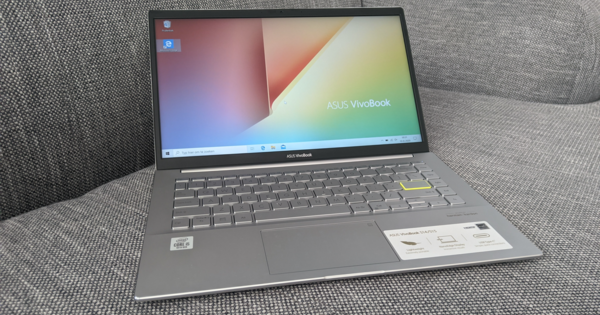Microsoft resolutely pulled the plug on Windows Movie Maker a few years ago. Although existing versions still work, there are no more updates of the original program. Still haven't found a good alternative? Then try OpenShot Video Editor. In this article we explain how the tool works.
Thanks to the smartphone, we always have a good video camera in our pocket and we use it frequently. If you want to do something with all that video material, you can't ignore a decent video editor. Previously, any Windows user could download Movie Maker for free through the Windows Essentials 2012 package. This program was excellent for simple movie montages. However, the program will no longer receive new features and Microsoft will no longer fix security problems. Anyone who wants to edit videos in an accessible way should therefore look for an alternative. It's worth giving OpenShot Video Editor a try. This freeware, unlike advanced video editors, is very simple to use and there is a Dutch translation of it.
Movie Maker App
While exact details are lacking, Movie Maker won't completely disappear from the scene. Microsoft has housed the video editing functionality in the Microsoft Photos app. This app comes preinstalled on all Windows 10 systems, but can also be found in the Microsoft Store.

01 Preparation
Unlike Windows Movie Maker, OpenShot Video Editor is available for multiple platforms. On the download page of OpenShot there are editions for Linux, macOS and of course Windows. In this article, we pay attention to the Windows edition. The installation does not contain any details, so you can go through all the standard steps. As soon as you open the program for the first time, OpenShot Video Editor comes up with a tutorial mode. By reading the explanation and each time Next one By clicking, you will get to know the basic features of the freeware. Please note that the explanation is in English. Apart from some imperfections, the interface of this video editor is fortunately in Dutch.

02 Import video files
Just like you were used to with Windows Movie Maker, it is important to first import the correct video files into OpenShot Video Editor. If necessary, you can connect your smartphone, tablet, video camera, SD card, USB stick or external disk with video files to your computer. Click in the menu on File / Filesimport. You then browse in the explorer to the correct location to show the video files. Good to know is that OpenShot Video Editor also recognizes network folders, so you can import videos directly from a NAS, for example. Select the desired videos and confirm with To open. The program supports most common video formats, such as mts, vob, mkv and mov. Keep in mind that importing video files directly from iPhone or iPad often fails. First save the media files locally and add them afterwards. In addition to video files, you can also import music and images.

03 Timeline
In Windows Movie Maker you were used to working with two panels, but in OpenShot Video Editor there are now three, namely a timeline, a preview and a project files panel. Between these windows you see six light gray dots. By clicking on this with the left mouse button and then dragging it, you determine the size of each panel yourself. That way you show all available tracks from the timeline. You can easily add video clips to the timeline. Click in the section Project files a video file and move the clip to the timeline with the mouse button pressed. Then release the mouse button. You have now added a video file to the movie montage. In this way you can easily put several video clips in succession and determine the order of the final film yourself. Want to delete a video file from the timeline? Select the correct clip within the timeline and press delete.
In addition to video files, you also add audio files to the timeline. You use a different track for this. Is the timeline getting too long, causing a part to fall out of the picture? You then click on the minus sign above the timeline on the right to zoom out. That way you have a better overview of which fragments the preliminary editing contains.

04 Trim video clips
You can trim video clips on the timeline to eliminate boring footage from the movie montage. Use the red slider on the timeline to determine the pivot point of the video. Do you want to erase the last part? On the right side of the video clip, click on the blue vertical line where the cursor changes into an icon with two arrows on either side. Move the cursor to the left with the mouse button pressed until you reach the red slider. Do you want to remove the first part from the video? Then click on the blue line on the left side of the fragment and move the cursor to the right.

Split clips
There is an alternative way to shorten a video clip, namely by dividing a clip. You set a start and end point, as you may remember from Windows Movie Maker. Right-click a video file in the panel Project files. Then choose the option split clip. You move the slider to the beginning of the clip you want to use. Confirm with Get started and then move the slider to the end point. After you click End clicked, think of a name for this truncated video file. Finally click on New.

05 Transitions
When you string several video clips together, there are rather harsh transitions. It is better to let fragments flow smoothly into each other. In Windows Movie Maker you used the Animations tab for this, but luckily OpenShot Video Editor also has plenty of options for this. Click below the panel Project files on the option transitions. The program contains all kinds of exotic templates of beautiful transitions. If you don't want to go crazy, click at the top Frequently used. Click on a transition and select the desired position on the timeline while holding down the mouse button. This can be done 'on top of' existing video fragments. With most templates, you add the transition at the very beginning of a video clip. Click the button below the video preview Play to view the result.

06 Fade
Another way to create a smooth transition between two clips is to slightly blur the images. When a clip ends, the frame slowly disappears from the movie. The reverse is true for the beginning of a clip. This makes the beginning and end of each video fragment less abrupt, without a noticeable transition being visible as is the case with regular transition templates (see step 5). In Windows Movie Maker, Fade is a regular transition, but in OpenShot Video Editor, this feature is in a separate place. Right click on a clip and go to Fade / Entire Clip. Make a choice between here Fade in and out (fast) and Fade in and out (slow).
07 Effects
Via the option Effects you can edit the images somewhat, although the possibilities for this are somewhat limited, compared to Microsoft's dilapidated video editor. You're using Brightness if you find the images a bit too dark. In addition, the effect Color saturation interesting, because it allows you to make the colors brighter. Of Blur, Chroma key, De-interlace, Alpha Mask/Wipe Transition and Negative OpenShot Video Editor has a total of seven effects in-house.
You apply an effect by positioning the effect on top of a video clip of the timeline. An icon will appear on the timeline as proof that the effect has been applied. For example, if you use Brightness, a B (for Brightness) will appear. Right click on this icon and choose Characteristics. At the bottom left, a window appears with which you can adjust the values of the effect yourself. It's not that easy, but you might want to play around with it for a while.

Other alternatives
In addition to OpenShot Video Editor, there are more free alternatives to Windows Movie Maker available. If you work a lot with YouTube, you can possibly perform simple edits online. Just take a look at the YouTube editor. The functions work fine, although you must first upload all videos to YouTube. Those who want an advanced video editor can consider the versatile Lightworks. For a course with this (somewhat difficult) video editor, check out our website.
In this article, we'll talk about more video editing programs, but not all of them are free to use. Nevertheless, we concluded strangely enough that the free tools do offer the best file support.

08 Tilt
Especially with a smartphone, it sometimes happens that you tilt the device during video recording. You will notice this during installation. Fortunately, you can also rotate the images in OpenShot Video Editor so that they are usable for the movie. Right click on a video clip and go to rotate. Make a choice between here rotate 90° (right) or rotate 90° (left).
09 Film finish
Are you completely satisfied with the installation? High time to save the final movie. Go to File / Video Export and come up with an appropriate name for the project. You select via To leaf through the correct storage location. Bee Profile leave you the option All formats unchanged. Don't forget to select the desired output format behind Target, for example MP4 (h.264) or AVI (mpeg4). This choice depends a lot on the file compatibility of the device on which you want to play the movie. At Video profile you choose the resolution and frame rate. Make sure that these values match the movie properties of the camera used. Finally, set the desired quality, after which you confirm with Export video.


